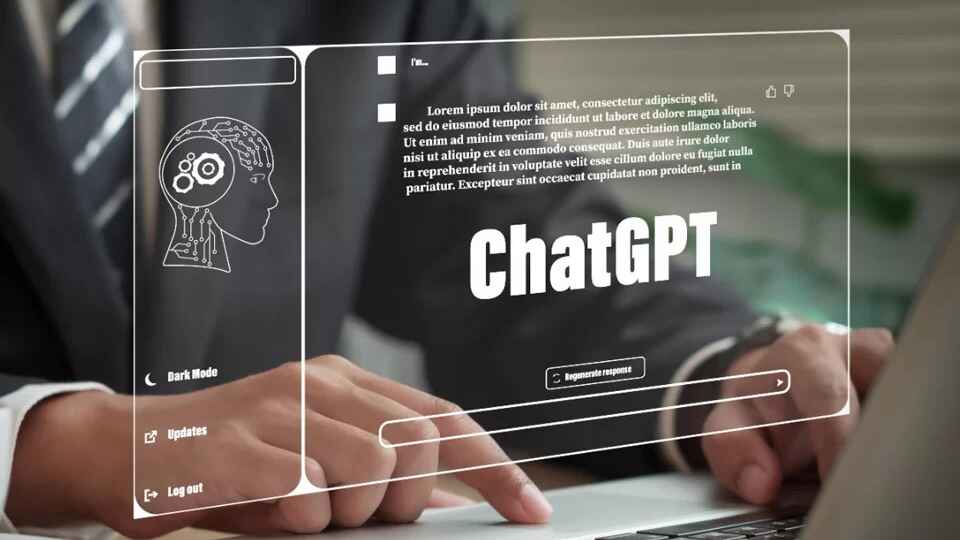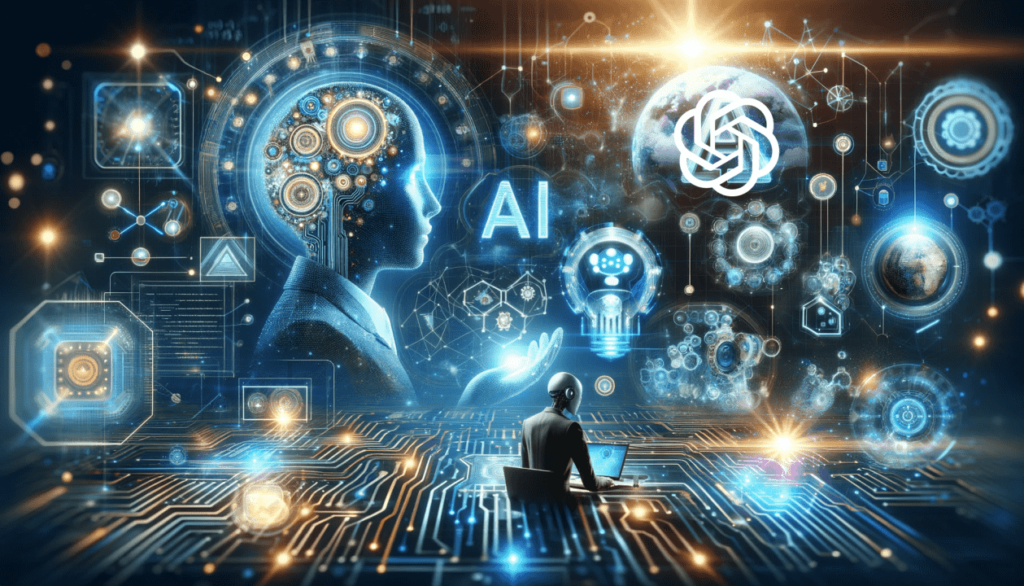ChatGPT: The Future of AI-Powered Conversations

Overview of AI-Powered Conversations
Artificial Intelligence (AI) has revolutionized various aspects of our lives, and one of its most intriguing applications is in powering conversations. AI-powered conversations, driven by sophisticated models like ChatGPT, are transforming how we interact with technology and each other. These conversations enable machines to understand, interpret, and respond to human language in ways that were once thought impossible.
Brief History of ChatGPT and AI in Communication
The journey of AI in communication began decades ago, but significant strides have been made in recent years. ChatGPT, developed by OpenAI, represents a culmination of advancements in neural networks and natural language processing (NLP). From early chatbots that could handle simple queries to today’s highly sophisticated systems, AI has come a long way. ChatGPT, specifically, leverages vast amounts of data and complex algorithms to generate human-like responses, making interactions more seamless and natural.
Importance and Relevance of AI in Modern Communication
In our increasingly digital world, the ability to communicate effectively and efficiently is paramount. AI-powered conversations enhance this capability by providing instant, accurate, and personalized responses. This technology is not just a novelty; it is becoming a necessity across various industries, from customer service to healthcare. The relevance of AI in modern communication lies in its potential to handle vast amounts of information, understand nuanced language, and provide meaningful interactions that can improve overall user experience.
Technical Specifications
Underlying Technologies in ChatGPT

Neural Networks
At the core of ChatGPT is the neural network, specifically designed to mimic the way the human brain processes information. These networks consist of layers of interconnected nodes, or neurons, which work together to recognize patterns and generate responses. The complexity and depth of these networks enable ChatGPT to understand and generate human-like text with remarkable accuracy.
Natural Language Processing (NLP)
Natural Language Processing (NLP) is another critical component of ChatGPT. NLP involves the interaction between computers and human language, allowing machines to process and analyze large amounts of natural language data. Through NLP, ChatGPT can understand the context, semantics, and syntax of the language, making it capable of engaging in more meaningful and contextually appropriate conversations.
Training Data and Algorithms
Data Sources
The training data for ChatGPT comes from a diverse range of sources, including books, websites, and other textual content. This extensive dataset provides the model with a broad understanding of language, context, and various topics, enabling it to generate relevant and coherent responses.
Training Process
Training ChatGPT involves feeding it vast amounts of data and fine-tuning it through iterative processes. This includes supervised learning, where the model is trained on known input-output pairs, and reinforcement learning, where it is optimized based on feedback from its performance. This combination of methods helps refine the model’s ability to generate high-quality responses.
Hardware and Software Requirements
Computational Power
Running and training models like ChatGPT requires significant computational power. High-performance GPUs and TPUs are typically used to handle the complex calculations involved in neural network training. The computational requirements are substantial, often necessitating cloud-based infrastructure to manage the load efficiently.
Software Dependencies
In addition to powerful hardware, specific software frameworks are essential for developing and deploying ChatGPT. These include machine learning libraries such as TensorFlow and PyTorch, which provide the necessary tools and functions to build and optimize neural networks. Additionally, various APIs and integration tools are used to embed ChatGPT into different applications and platforms.
Applications
Customer Service
One of the most prominent applications of ChatGPT is in customer service. AI-powered chatbots can handle inquiries, provide support, and resolve issues 24/7, enhancing customer satisfaction and reducing the need for human intervention. This not only improves efficiency but also allows human agents to focus on more complex tasks.
Healthcare
In healthcare, ChatGPT can assist in numerous ways, from providing information about symptoms and treatments to helping schedule appointments. It can also support mental health services by offering conversational agents that provide immediate, empathetic responses to individuals seeking help.
Education
ChatGPT is transforming education by providing personalized tutoring and assistance to students. It can help explain complex concepts, provide feedback on assignments, and offer resources for further learning. This personalized approach can enhance the learning experience and support educators in managing larger classrooms.
Entertainment
In the entertainment industry, ChatGPT is used to create interactive experiences in video games, virtual reality environments, and more. It can generate dialogues, create characters with dynamic personalities, and enhance user engagement through more realistic and immersive interactions.
Business and Commerce
For businesses, ChatGPT offers a range of applications, including virtual assistants that can help with scheduling, reminders, and task management. In commerce, it can enhance customer interactions, provide product recommendations, and streamline the purchasing process through conversational interfaces.
Personal Assistants
Personal assistant applications, like virtual helpers on smartphones, are another area where ChatGPT excels. These assistants can manage daily tasks, answer queries, and even engage in small talk, making technology more accessible and user-friendly.
Benefits
Enhanced Efficiency
One of the primary benefits of AI-powered conversations is enhanced efficiency. ChatGPT can process and respond to multiple queries simultaneously, significantly reducing wait times and improving service delivery. This capability is especially valuable in high-demand environments like customer service centers.
Cost Reduction
Implementing ChatGPT can lead to significant cost reductions for businesses. By automating routine inquiries and tasks, companies can decrease their reliance on human staff, lowering labor costs and increasing operational efficiency.
Improved User Experience
ChatGPT enhances user experience by providing quick, accurate, and personalized responses. Its ability to understand and predict user needs makes interactions smoother and more satisfying, leading to higher levels of user engagement and satisfaction.
Accessibility and Inclusivity
AI-powered conversations make technology more accessible to a broader audience, including individuals with disabilities. For example, voice-activated assistants can help those with visual impairments navigate digital spaces more easily, promoting inclusivity and equal access to information.
Scalability
ChatGPT’s scalability allows it to handle a large volume of interactions without compromising on performance. This makes it an ideal solution for businesses looking to expand their customer support capabilities without a proportional increase in resources.
Challenges and Limitations
Ethical Concerns
Bias and Fairness
One of the significant challenges in AI-powered conversations is ensuring fairness and reducing bias. ChatGPT, like other AI systems, can inadvertently reflect and amplify biases present in its training data. Addressing these ethical concerns is crucial for creating equitable and trustworthy AI systems.
Privacy Issues
Data Security
Privacy is another critical concern. ChatGPT processes vast amounts of user data, raising questions about data security and user privacy. Ensuring that this data is protected and used responsibly is essential to maintain user trust and comply with regulations.
Technical Limitations
Understanding Context
While ChatGPT is highly advanced, it can still struggle with understanding complex contexts and nuances. Misinterpretations can lead to irrelevant or incorrect responses, highlighting the need for ongoing improvements in contextual understanding.
Ambiguity Resolution
Resolving ambiguities in human language is another technical challenge. ChatGPT may sometimes produce ambiguous responses or fail to disambiguate user queries effectively, which can hinder communication and user satisfaction.
Dependence on High-Quality Data
The performance of ChatGPT heavily relies on the quality of its training data. Poor quality or biased data can lead to suboptimal performance and perpetuate inaccuracies. Continuous efforts to curate and improve training datasets are necessary to enhance the system’s reliability.
Latest Innovations
Recent Advances in NLP
Recent advancements in NLP have significantly improved the capabilities of ChatGPT. These include better understanding of context, more accurate sentiment analysis, and the ability to generate more coherent and contextually appropriate responses. Such innovations continue to push the boundaries of what AI-powered conversations can achieve.
Integration with Other Technologies
Integrating ChatGPT with other emerging technologies, such as augmented reality (AR) and the Internet of Things (IoT), has opened up new possibilities for interactive and immersive experiences. These integrations enhance the utility and versatility of ChatGPT across different applications.
Improvements in User Interaction
Ongoing improvements in user interaction focus on making conversations with ChatGPT more natural and intuitive. Enhanced voice recognition, emotion detection, and personalized interactions contribute to a more engaging user experience.
Future Prospects
Predictions for the Next Decade
Looking ahead, AI-powered conversations are expected to become even more integral to our daily lives. With continuous advancements in AI and NLP, ChatGPT will likely become more intuitive, capable, and seamlessly integrated into various aspects of society.
Potential Impact on Various Industries
The potential impact of ChatGPT spans numerous industries. In healthcare, it could revolutionize patient care and support. In education, it might offer more personalized learning experiences. Business operations could become more efficient, and entertainment could see more interactive and immersive experiences.
Emerging Trends in AI Conversations
Emerging trends in AI conversations include the development of more emotionally intelligent AI, the integration of multimodal inputs (such as text, voice, and visual data), and the creation of more specialized and context-aware conversational agents.
Comparative Analysis
ChatGPT vs. Other AI Systems
Compared to other AI systems, ChatGPT stands out for its versatility and ability to generate human-like text. However, it also faces competition from other advanced models and systems that may offer superior performance in specific tasks or domains.
Pros and Cons Compared to Human Interaction
While ChatGPT can handle a large volume of interactions and provide consistent responses, it lacks the depth of understanding and empathy that human interaction offers. However, its ability to provide instant and accurate responses makes it a valuable tool in many applications.
User Guides or Tutorials
Getting Started with ChatGPT
To get started with ChatGPT, users typically need to access a platform that offers the service, such as a website or application. Setting up an account and configuring preferences can help personalize the experience. Detailed guides are available to assist new users in navigating the interface and utilizing the system effectively.
Best Practices for Effective Interaction
Effective interaction with ChatGPT involves clear and concise communication. Providing specific context and avoiding ambiguous language can help the system generate more accurate responses. Users should also be aware of the system’s limitations and know when to seek human assistance.
Customizing ChatGPT for Specific Needs

ChatGPT can be customized to meet specific needs by adjusting settings and integrating with other tools and applications. Businesses can tailor the system to handle particular queries, provide industry-specific information, and align with brand guidelines.
Conclusion
Recap of Key Points
ChatGPT represents a significant advancement in AI-powered conversations, offering numerous benefits across various applications. From enhancing customer service to transforming education and healthcare, its impact is profound. However, challenges such as ethical concerns and technical limitations must be addressed to fully realize its potential.
Future Implications
The future of AI-powered conversations looks promising, with ongoing advancements poised to make interactions even more seamless and intuitive. As technology continues to evolve, ChatGPT will likely play an increasingly vital role in our daily lives, transforming how we communicate and interact with machines.
Call to Action for Further Education
To stay informed and make the most of AI-powered conversations, individuals and organizations should continue to explore and invest in this technology. Engaging with educational resources, attending industry events, and participating in discussions about AI can help everyone stay ahead of the curve.
